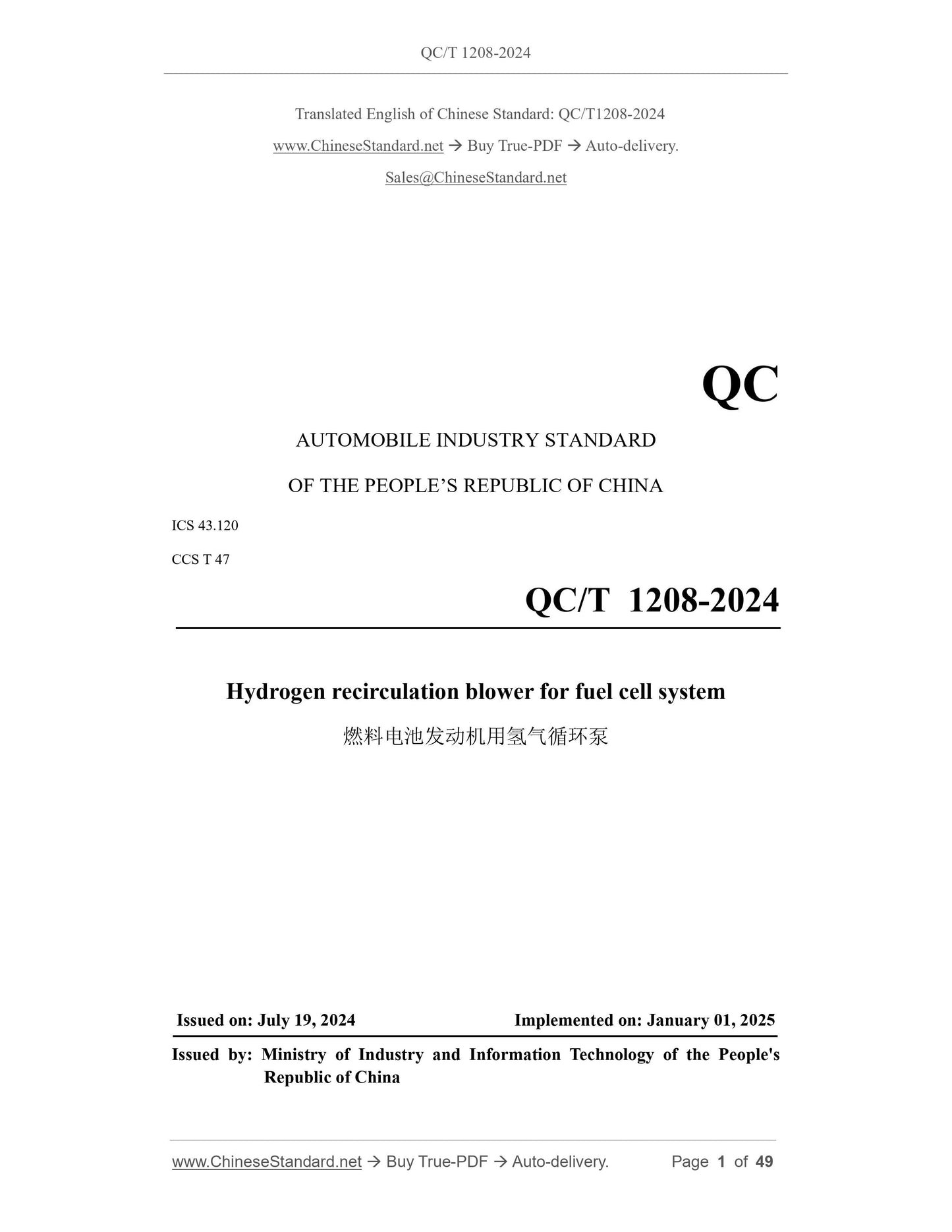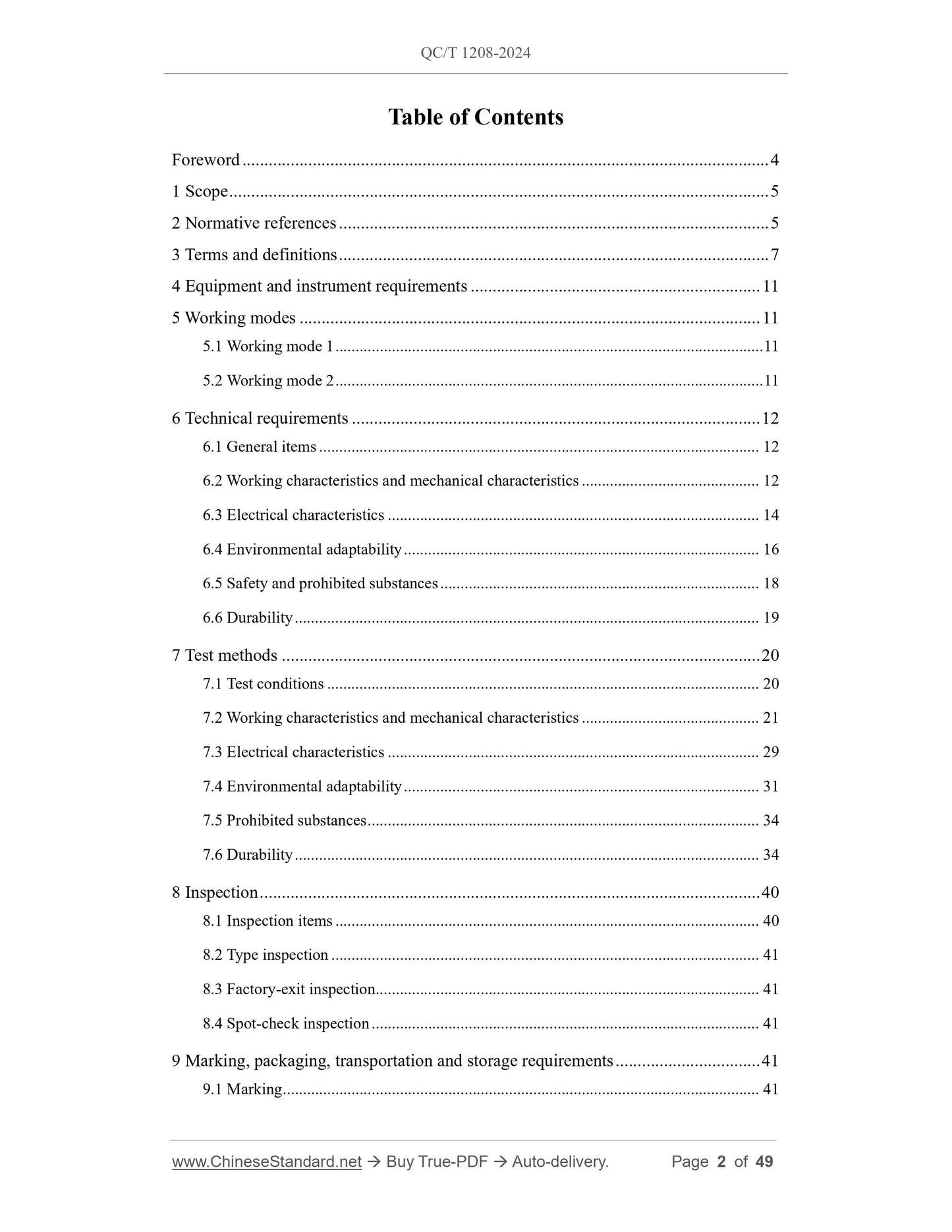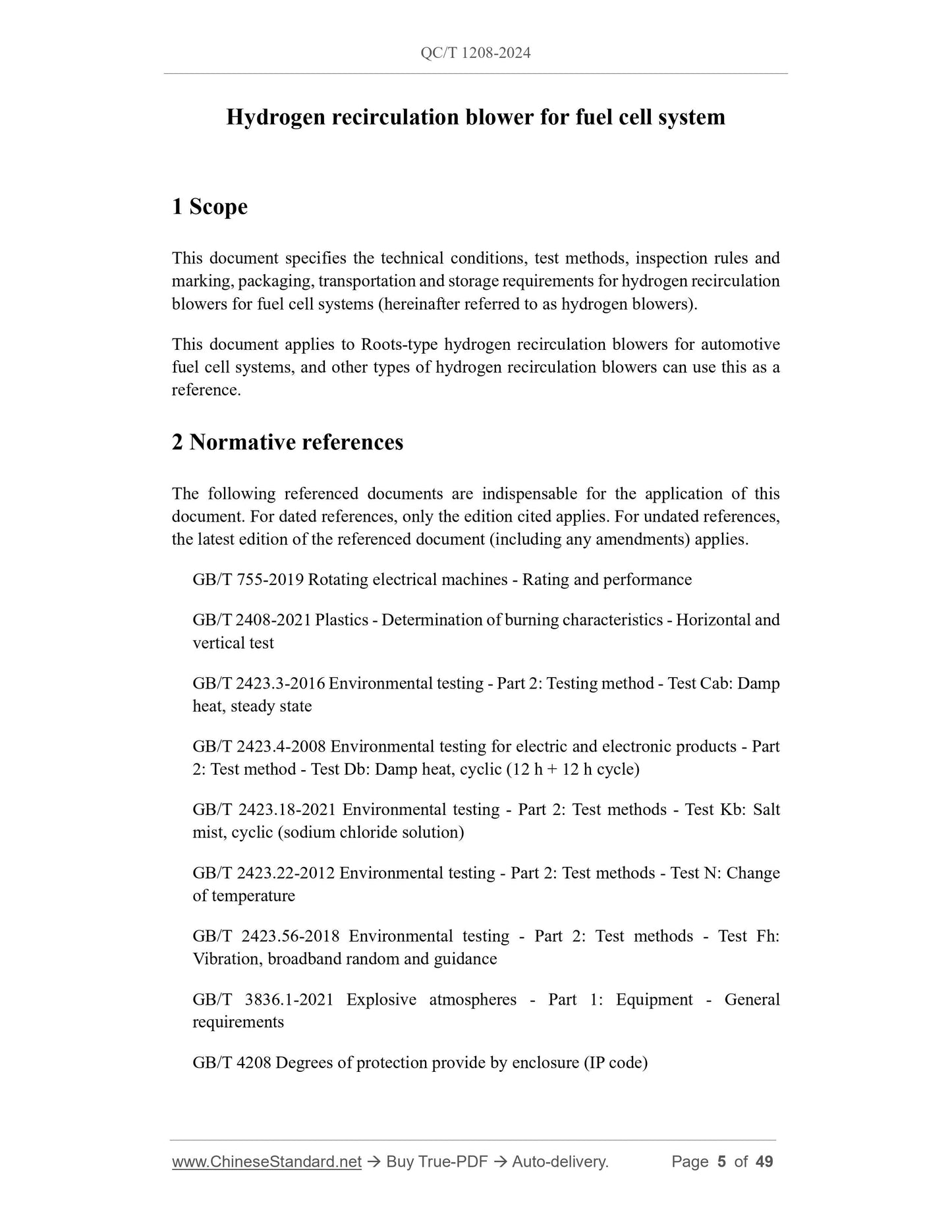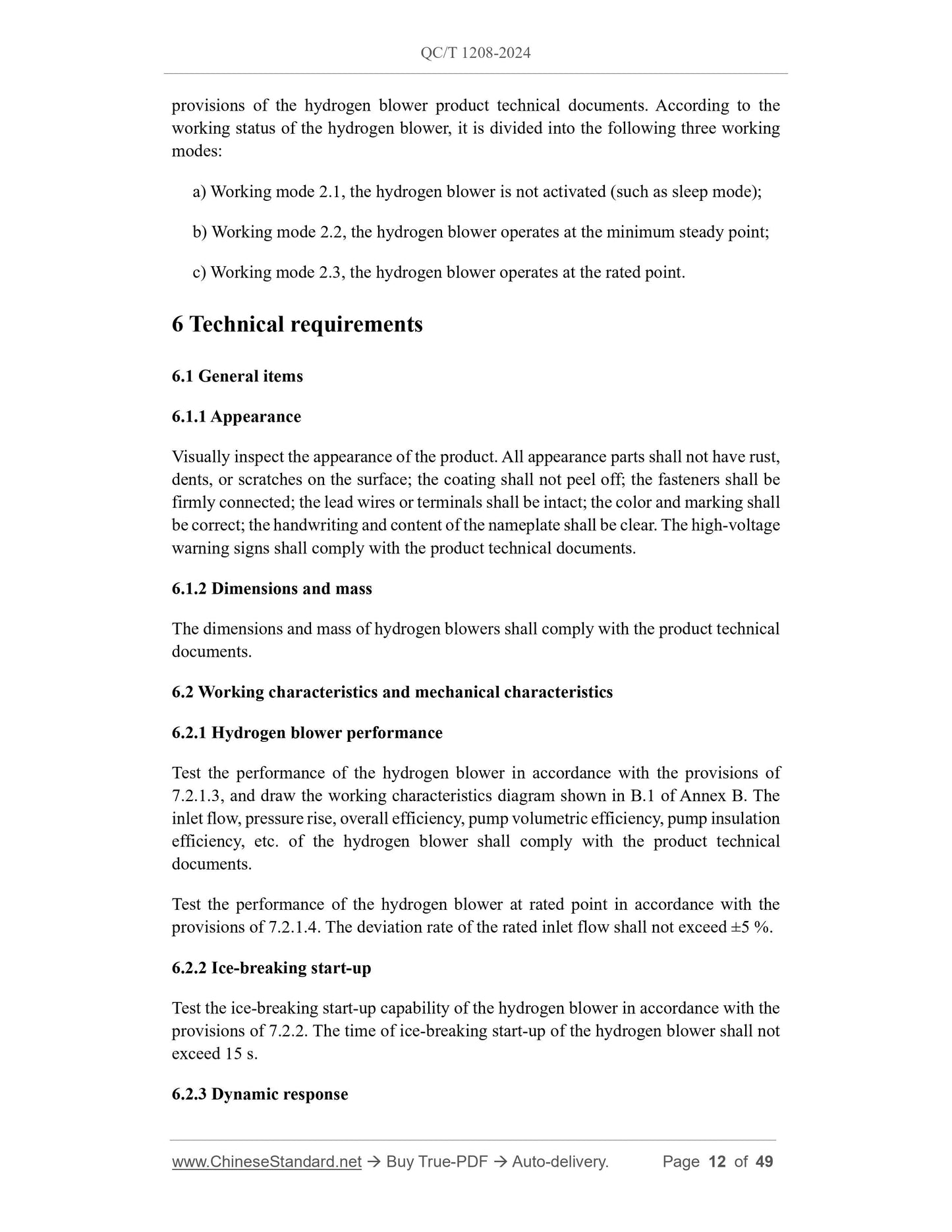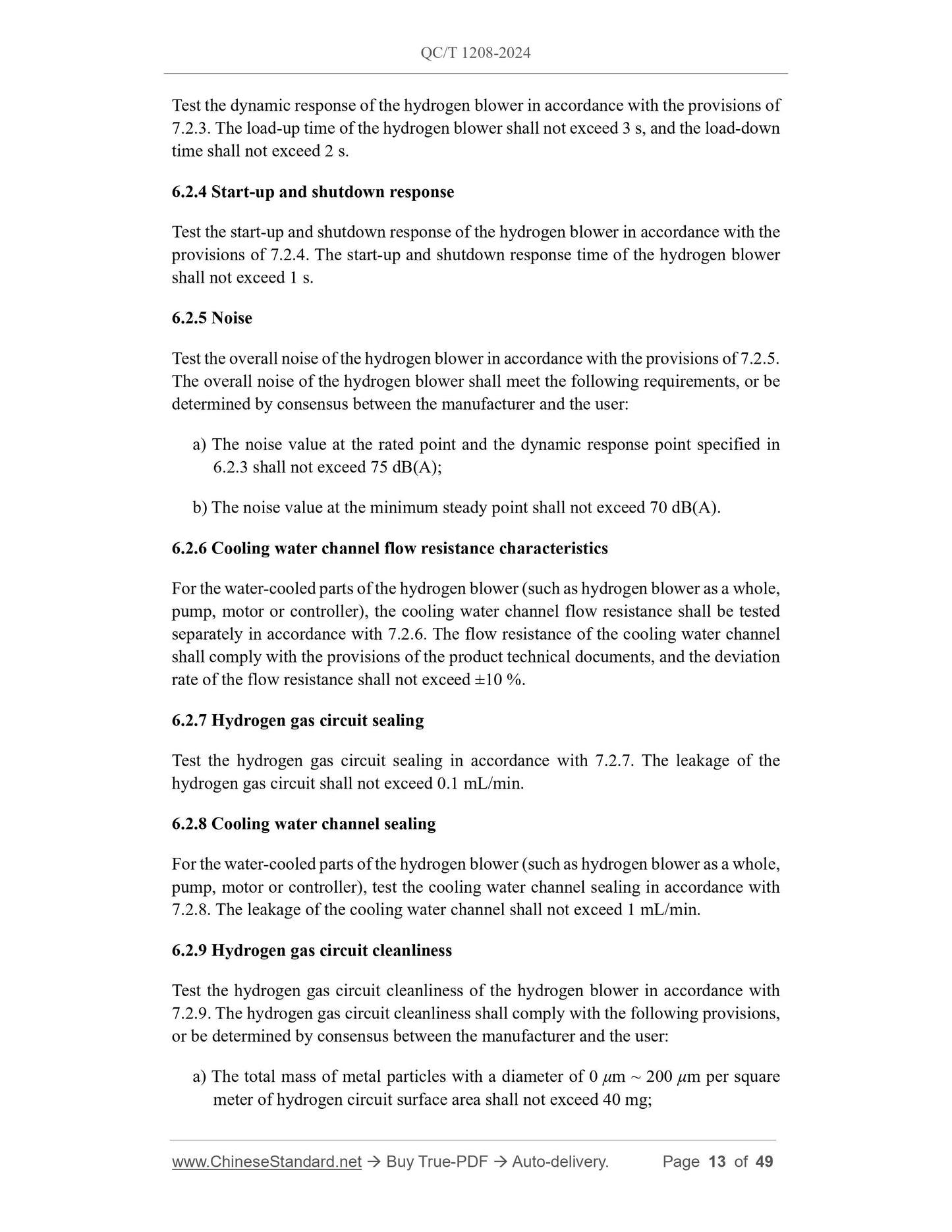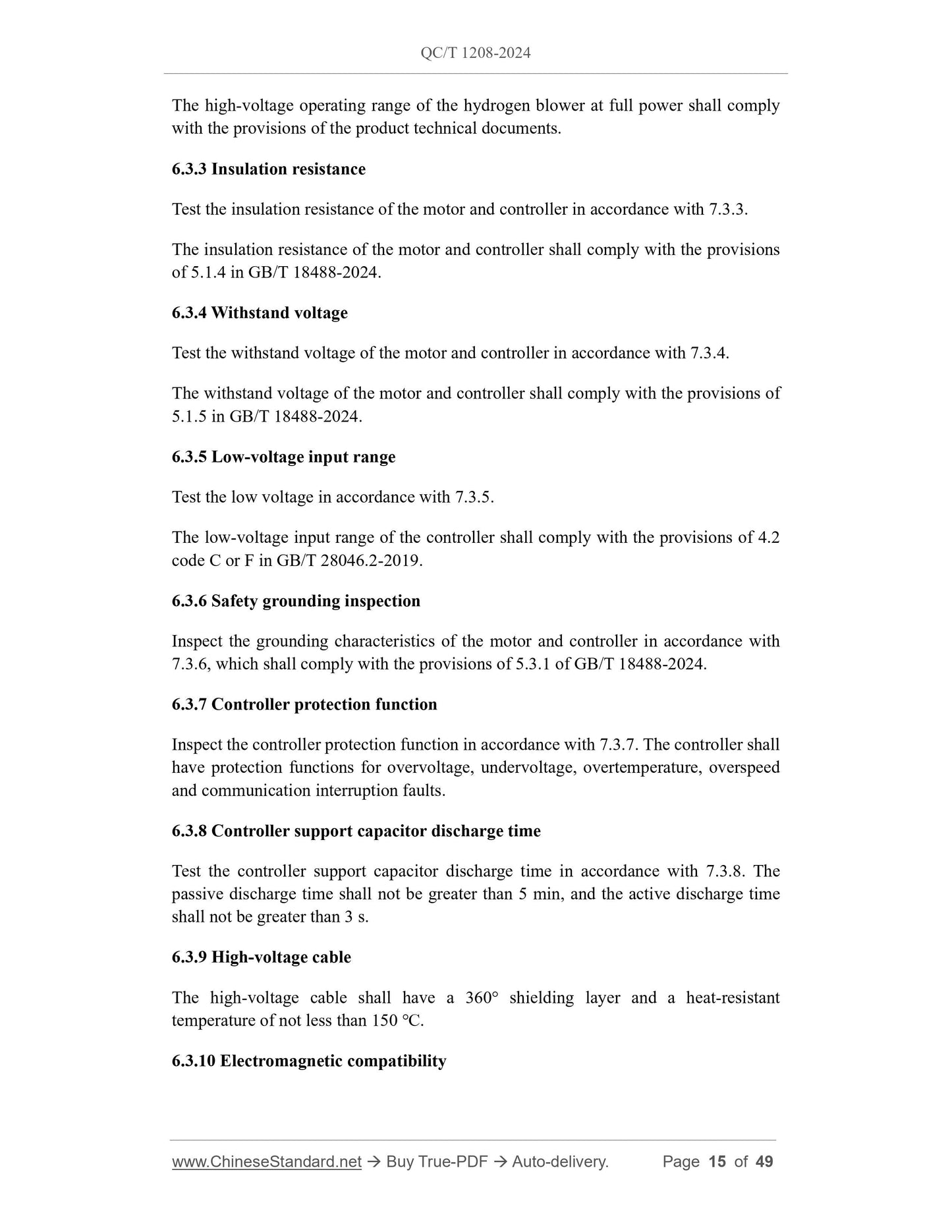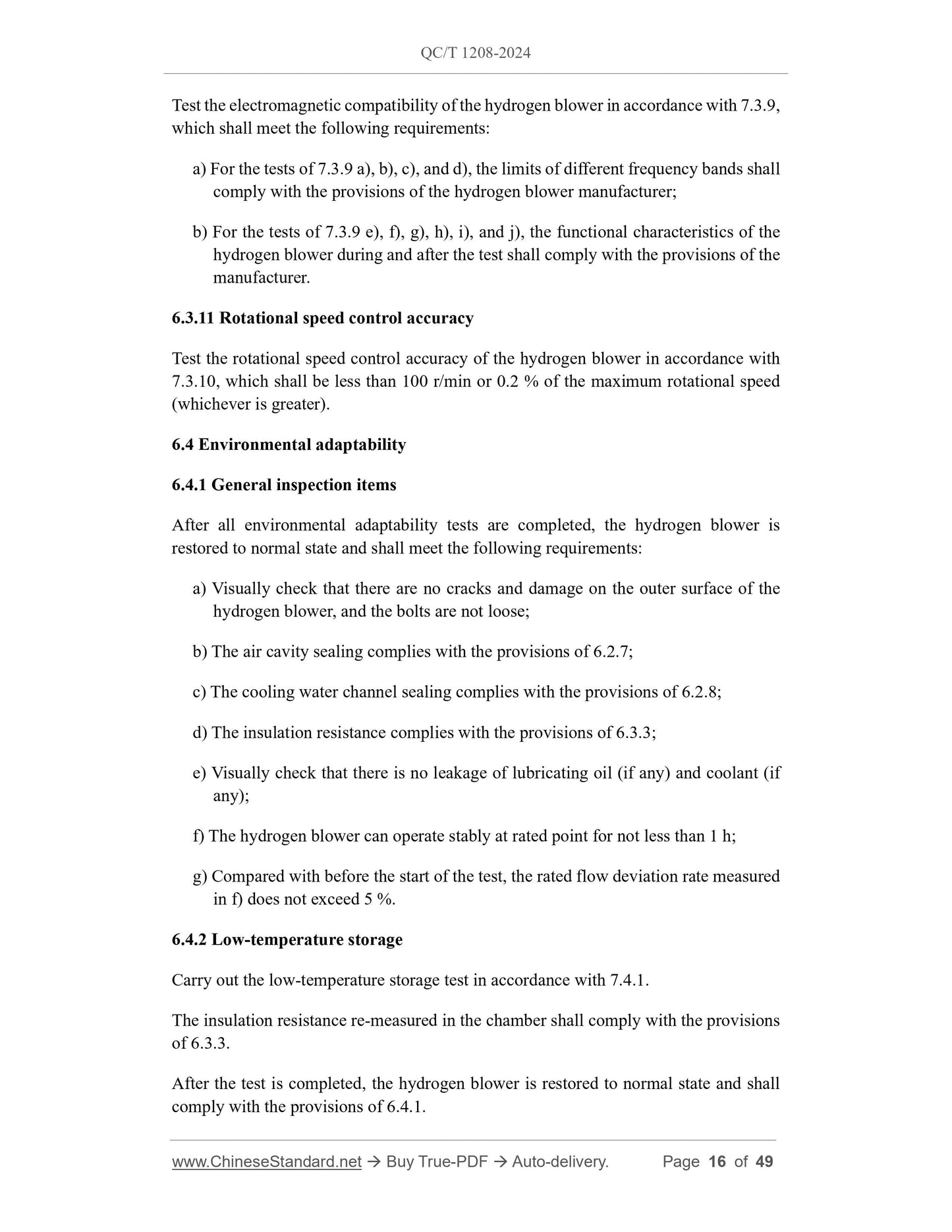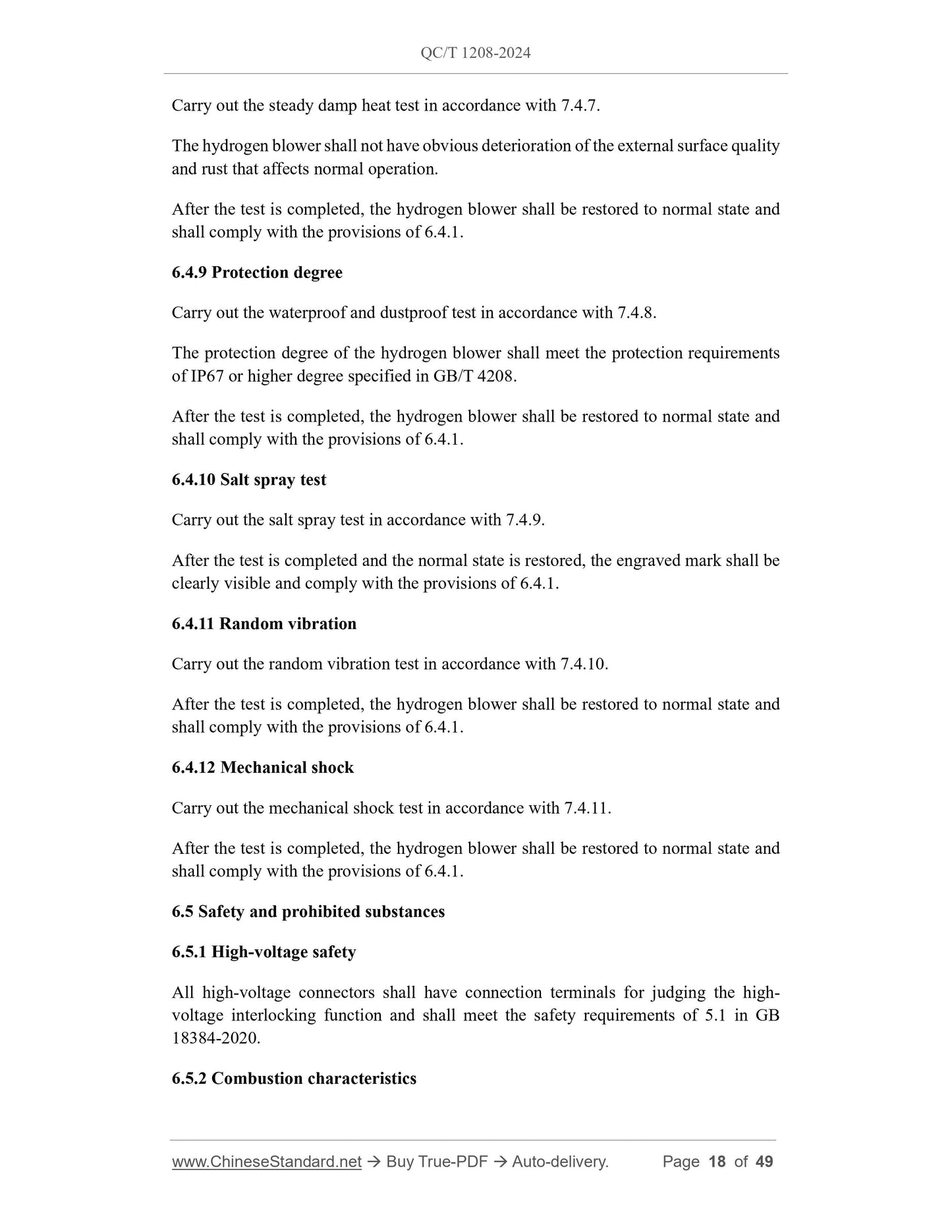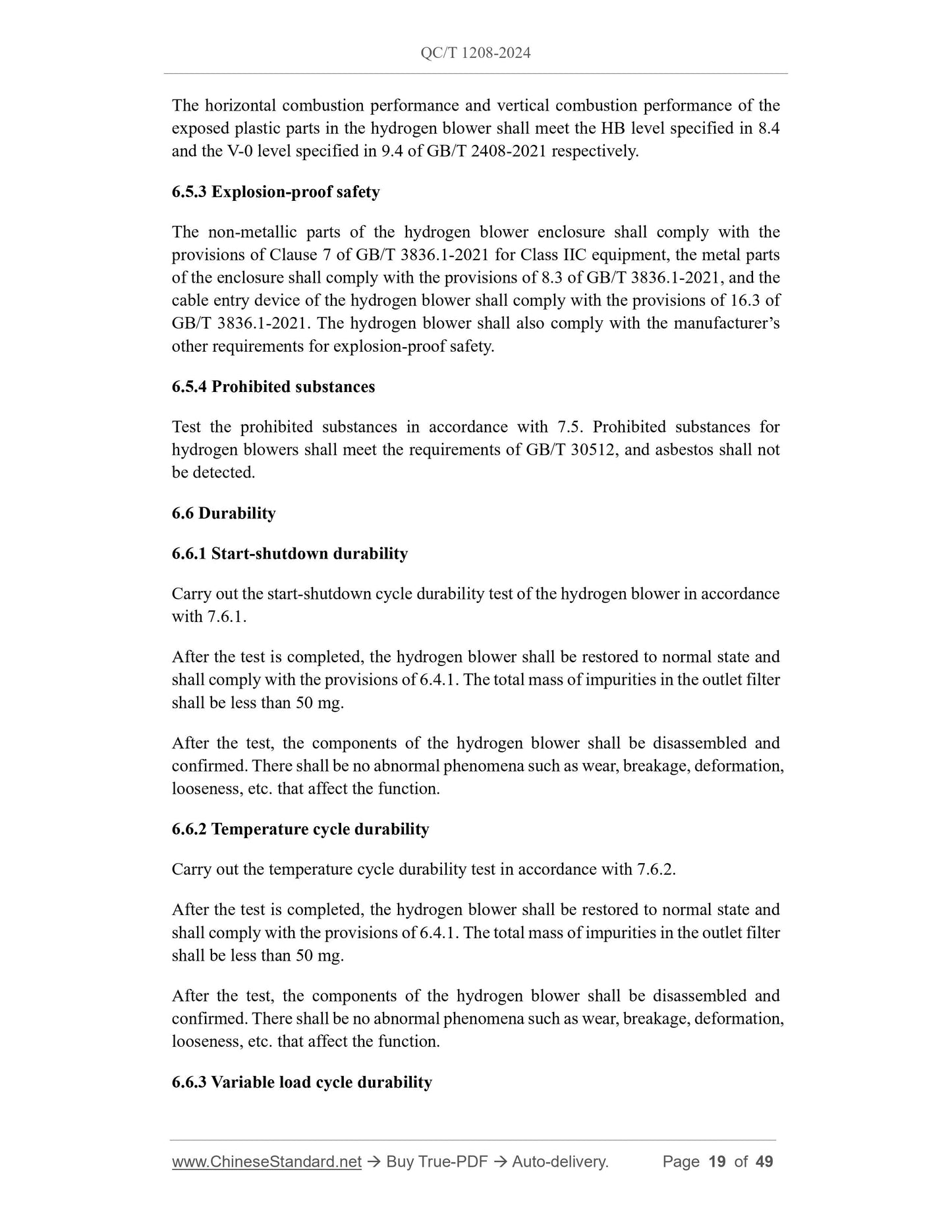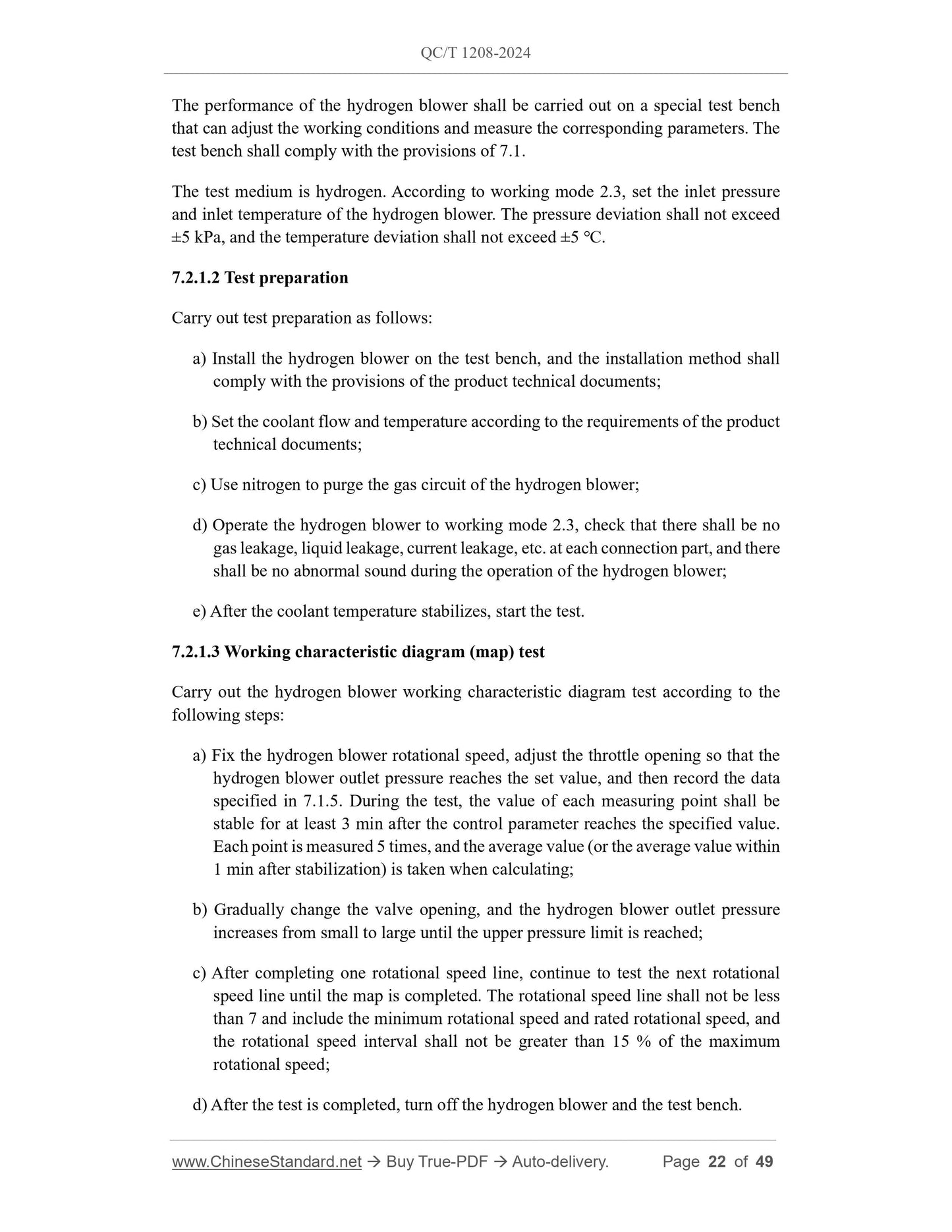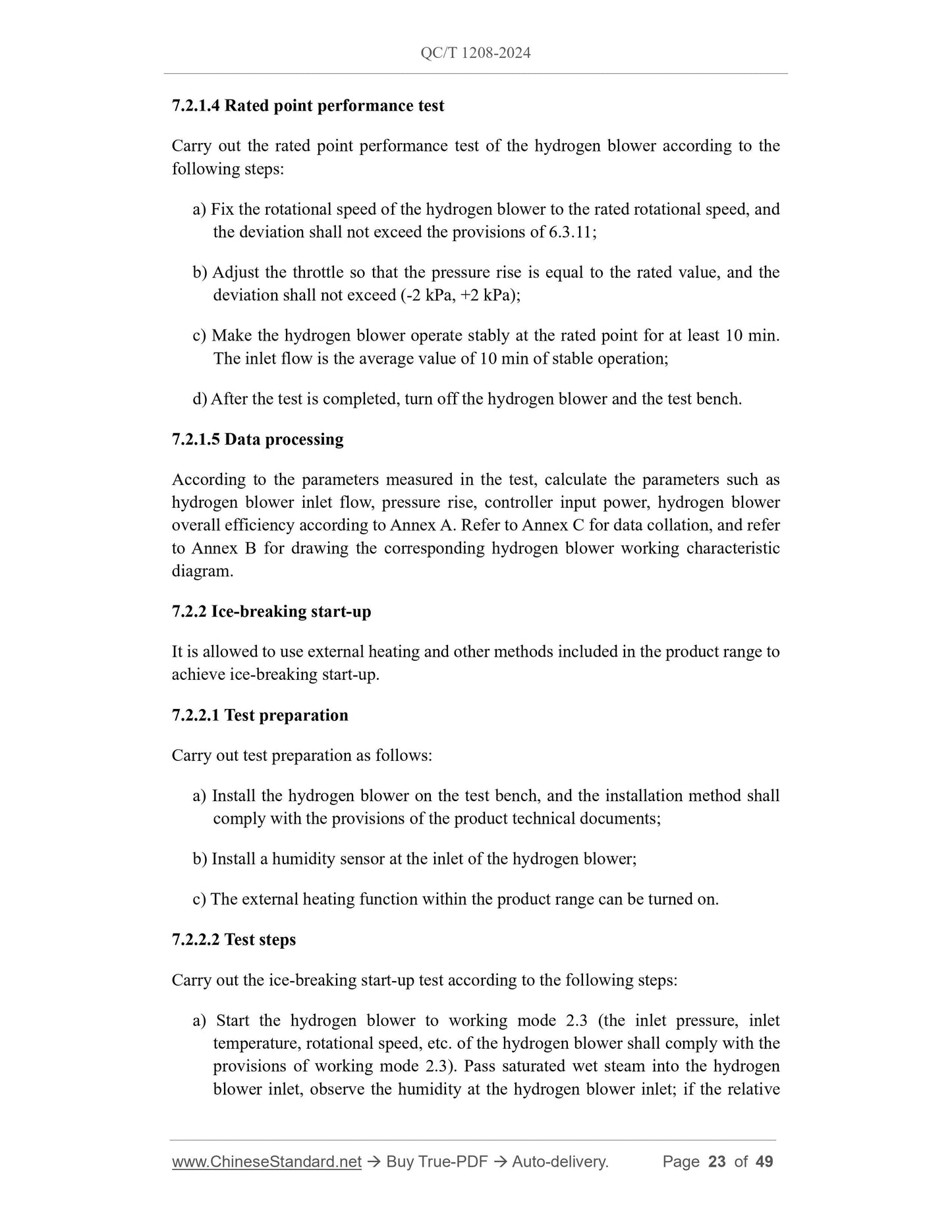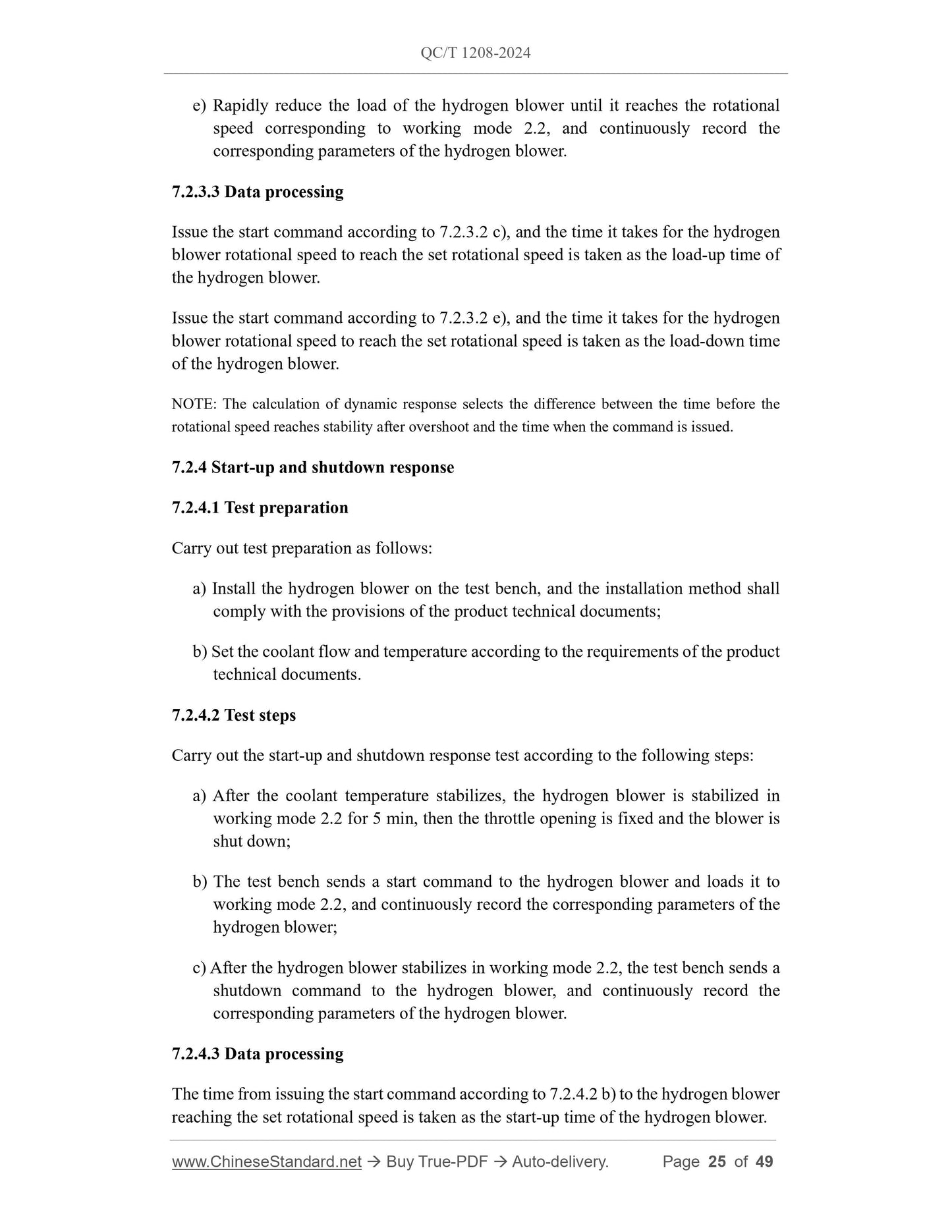1
/
of
12
www.ChineseStandard.us -- Field Test Asia Pte. Ltd.
QC/T 1208-2024 English PDF (QC/T1208-2024)
QC/T 1208-2024 English PDF (QC/T1208-2024)
Regular price
$470.00
Regular price
Sale price
$470.00
Unit price
/
per
Shipping calculated at checkout.
Couldn't load pickup availability
QC/T 1208-2024: Hydrogen recirculation blower for fuel cell system
Delivery: 9 seconds. Download (and Email) true-PDF + Invoice.Get Quotation: Click QC/T 1208-2024 (Self-service in 1-minute)
Newer / historical versions: QC/T 1208-2024
Preview True-PDF
Scope
This document specifies the technical conditions, test methods, inspection rules andmarking, packaging, transportation and storage requirements for hydrogen recirculation
blowers for fuel cell systems (hereinafter referred to as hydrogen blowers).
This document applies to Roots-type hydrogen recirculation blowers for automotive
fuel cell systems, and other types of hydrogen recirculation blowers can use this as a
reference.
Basic Data
| Standard ID | QC/T 1208-2024 (QC/T1208-2024) |
| Description (Translated English) | Hydrogen recirculation blower for fuel cell system |
| Sector / Industry | Automobile and Vehicle Industry Standard (Recommended) |
| Classification of Chinese Standard | T47 |
| Classification of International Standard | 43.12 |
| Word Count Estimation | 34,314 |
| Date of Issue | 7/19/2024 |
| Date of Implementation | 1/1/2025 |
| Issuing agency(ies) | Ministry of Industry and Information Technology |
Share
